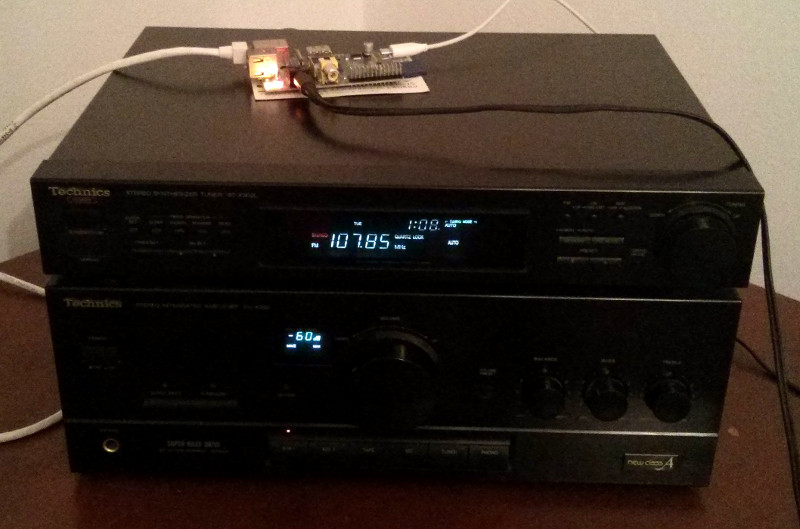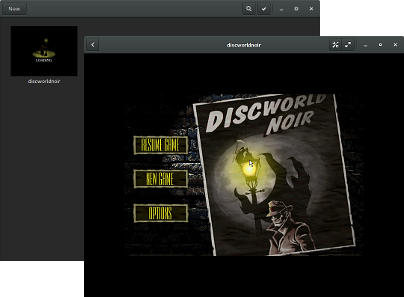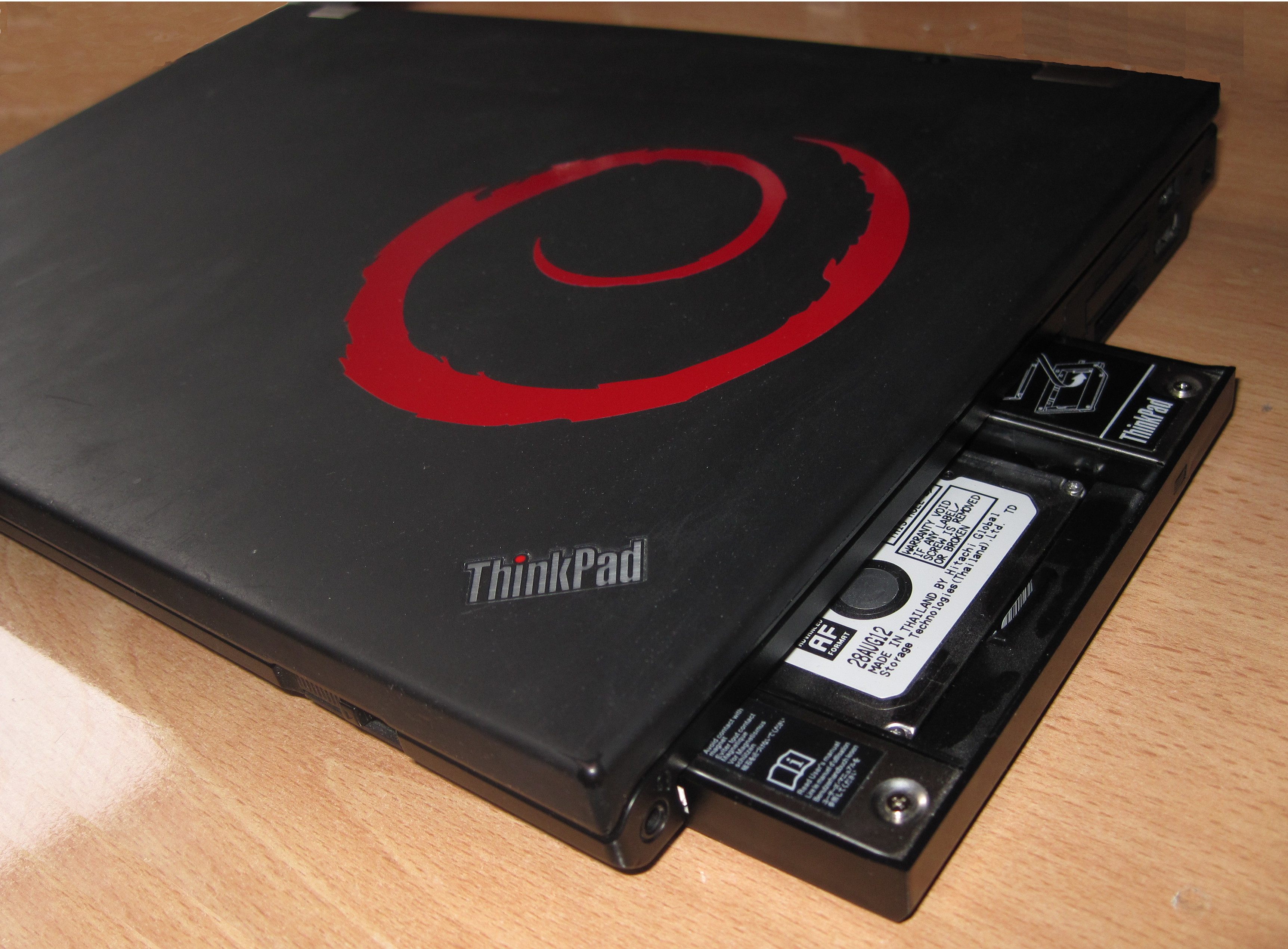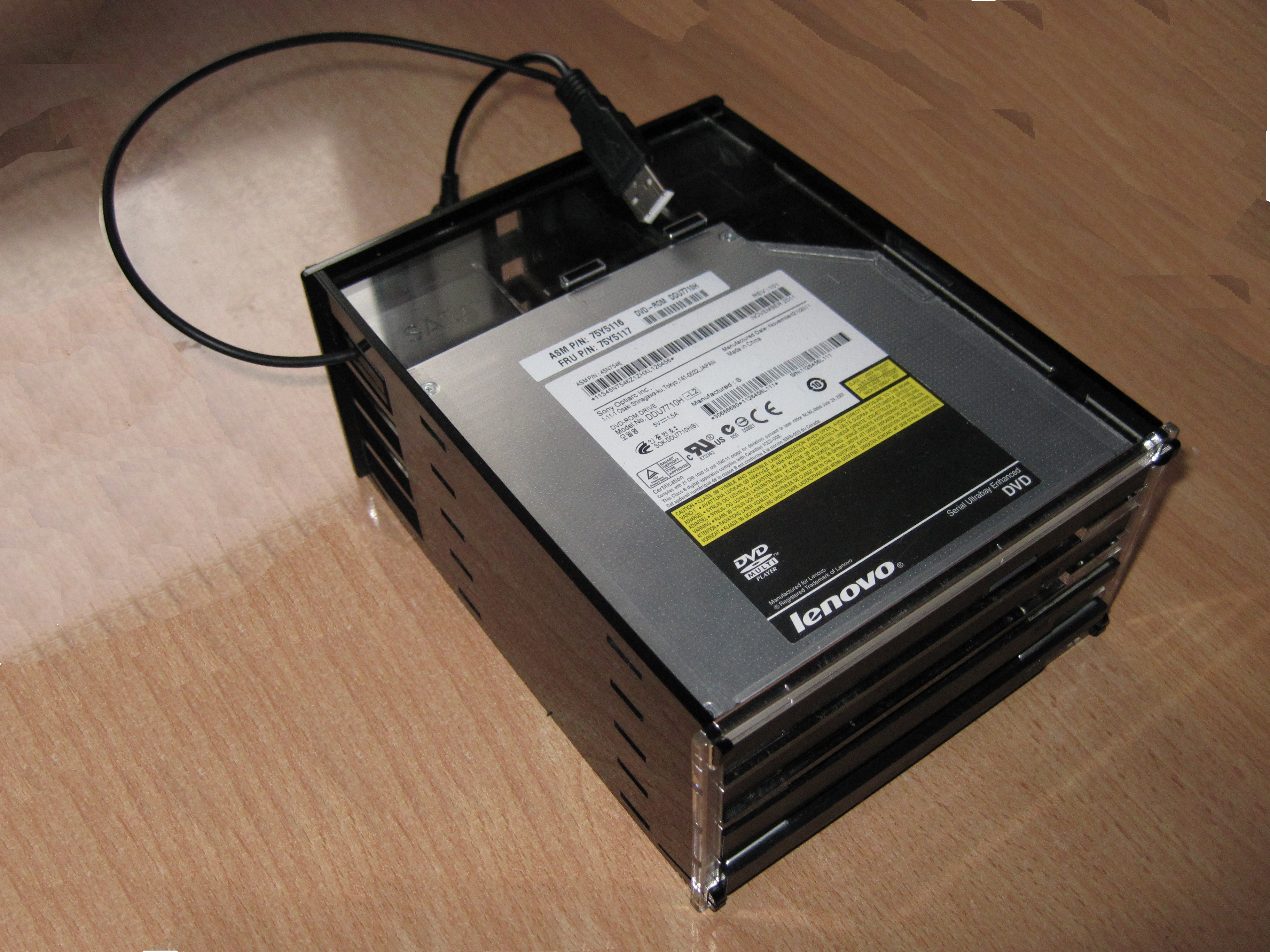Last year I blogged about blacklisting a video driver so that KVM virtual machines didn t go into graphics mode [1]. Now I ve been working on some other things to make virtual machines run better.
I use the same initramfs for the physical hardware as for the virtual machines. So I need to remove modules that are needed for booting the physical hardware from the VMs as well as other modules that get dragged in by systemd and other things. One significant saving from this is that I use BTRFS for the physical machine and the BTRFS driver takes 1M of RAM!
The first thing I did to reduce the number of modules was to edit /etc/initramfs-tools/initramfs.conf and change MODULES=most to MODULES=dep . This significantly reduced the number of modules loaded and also stopped the initramfs from probing for a non-existant floppy drive which added about 20 seconds to the boot. Note that this will result in your initramfs not supporting different hardware. So if you plan to take a hard drive out of your desktop PC and install it in another PC this could be bad for you, but for servers it s OK as that sort of upgrade is uncommon for servers and only done with some planning (such as creating an initramfs just for the migration).
I put the following rmmod commands in /etc/rc.local to remove modules that are automatically loaded:
rmmod btrfs
rmmod evdev
rmmod lrw
rmmod glue_helper
rmmod ablk_helper
rmmod aes_x86_64
rmmod ecb
rmmod xor
rmmod raid6_pq
rmmod cryptd
rmmod gf128mul
rmmod ata_generic
rmmod ata_piix
rmmod i2c_piix4
rmmod libata
rmmod scsi_mod
In /etc/modprobe.d/blacklist.conf I have the following lines to stop drivers being loaded. The first line is to stop the video mode being set and the rest are just to save space. One thing that inspired me to do this is that the parallel port driver gave a kernel error when it loaded and tried to access non-existant hardware.
blacklist bochs_drm
blacklist joydev
blacklist ppdev
blacklist sg
blacklist psmouse
blacklist pcspkr
blacklist sr_mod
blacklist acpi_cpufreq
blacklist cdrom
blacklist tpm
blacklist tpm_tis
blacklist floppy
blacklist parport_pc
blacklist serio_raw
blacklist button
On the physical machine I have the following in /etc/modprobe.d/blacklist.conf. Most of this is to prevent loading of filesystem drivers when making an initramfs. I do this because I know there s never going to be any need for CDs, parallel devices, graphics, or strange block devices in a server room. I wouldn t do any of this for a desktop workstation or laptop.
blacklist ppdev
blacklist parport_pc
blacklist cdrom
blacklist sr_mod
blacklist nouveau
blacklist ufs
blacklist qnx4
blacklist hfsplus
blacklist hfs
blacklist minix
blacklist ntfs
blacklist jfs
blacklist xfs
Enrico Zini: Raspberry Pi as a Hi-Fi component
I have a 25 years old Technics hifi system that still works fine, and I gave it
a new life by replacing the CD player and cassette player modules with a
Raspberry Pi.
 Connection
Each component of the hifi has a mains input and a mains plug that is used to
power the next component. The element where the main power lead goes in is the
radio component,
which has a remote control receiver, a watch and a timer, and will power on the
rest of the system when turned on by its power button, the remote control, or
the alarm function.
I disconnected the cassette and cd player modules, and plugged the Raspberry Pi
phone charger/power supply in the free plug behind the amplifier
module,
at the end of the (now very short) power lead chain.
I also connected the audio output of the Raspberry Pi to the CD input of my
stereo. The advantage of CD over AUX is that the remote control buttons for
switching audio sources don't cover the AUX inputs.
With
The configuration file is
Make mpd discoverable:
Allow anyone who visits me to control the playlist, and only me to run admin
functions:
At my first try, mpd hung when changing songs.
I had to disable dmix by
uncommenting the
If at some point I'll decide to use other audio software on the system, I'll
probably want to play via pulseaudio.
Sending music to the stereo
I made a little script to sync the music directory on my laptop with
It uses this
mpd clients
mpc
M.A.L.P.
On my phone I installed M.A.L.P.
and now I have a remote control for mpd.
In its settings, I made a profile for home where I just had to set the hostname
for the stereo and the admin password.
Cantata
On my laptop I installed cantata, set
the hostname and password in the preferences, and had the client ready.
Profit!
Now I can take the remote control of my hi-fi, turn it on, and after a while
mpd will resume playing the song that was playing when I last shut it down.
I also have realtime player status on my phone and on my laptop, and can
control music from either at any time. Friends who visit me can do that as
well.
Everything was rather straightforward, well documented and easy to replicate.
The hardware is cheap and very easy to come by.
Connection
Each component of the hifi has a mains input and a mains plug that is used to
power the next component. The element where the main power lead goes in is the
radio component,
which has a remote control receiver, a watch and a timer, and will power on the
rest of the system when turned on by its power button, the remote control, or
the alarm function.
I disconnected the cassette and cd player modules, and plugged the Raspberry Pi
phone charger/power supply in the free plug behind the amplifier
module,
at the end of the (now very short) power lead chain.
I also connected the audio output of the Raspberry Pi to the CD input of my
stereo. The advantage of CD over AUX is that the remote control buttons for
switching audio sources don't cover the AUX inputs.
With
The configuration file is
Make mpd discoverable:
Allow anyone who visits me to control the playlist, and only me to run admin
functions:
At my first try, mpd hung when changing songs.
I had to disable dmix by
uncommenting the
If at some point I'll decide to use other audio software on the system, I'll
probably want to play via pulseaudio.
Sending music to the stereo
I made a little script to sync the music directory on my laptop with
It uses this
mpd clients
mpc
M.A.L.P.
On my phone I installed M.A.L.P.
and now I have a remote control for mpd.
In its settings, I made a profile for home where I just had to set the hostname
for the stereo and the admin password.
Cantata
On my laptop I installed cantata, set
the hostname and password in the preferences, and had the client ready.
Profit!
Now I can take the remote control of my hi-fi, turn it on, and after a while
mpd will resume playing the song that was playing when I last shut it down.
I also have realtime player status on my phone and on my laptop, and can
control music from either at any time. Friends who visit me can do that as
well.
Everything was rather straightforward, well documented and easy to replicate.
The hardware is cheap and very easy to come by.
 Connection
Each component of the hifi has a mains input and a mains plug that is used to
power the next component. The element where the main power lead goes in is the
radio component,
which has a remote control receiver, a watch and a timer, and will power on the
rest of the system when turned on by its power button, the remote control, or
the alarm function.
I disconnected the cassette and cd player modules, and plugged the Raspberry Pi
phone charger/power supply in the free plug behind the amplifier
module,
at the end of the (now very short) power lead chain.
I also connected the audio output of the Raspberry Pi to the CD input of my
stereo. The advantage of CD over AUX is that the remote control buttons for
switching audio sources don't cover the AUX inputs.
With
Connection
Each component of the hifi has a mains input and a mains plug that is used to
power the next component. The element where the main power lead goes in is the
radio component,
which has a remote control receiver, a watch and a timer, and will power on the
rest of the system when turned on by its power button, the remote control, or
the alarm function.
I disconnected the cassette and cd player modules, and plugged the Raspberry Pi
phone charger/power supply in the free plug behind the amplifier
module,
at the end of the (now very short) power lead chain.
I also connected the audio output of the Raspberry Pi to the CD input of my
stereo. The advantage of CD over AUX is that the remote control buttons for
switching audio sources don't cover the AUX inputs.
With alsamixer I adjusted the output volume to match that of the radio
component, so that I can switch between the two without surprising jumps in
volume. I used alsactl store to save the mixer levels.
Now when I turn the hifi on I also turn the Raspberry Pi on, and when I turn
the hifi off, I also cut power from the Raspberry Pi.
Operating system
Operating system install instructions:
- I downloaded a Raspbian Jessie Lite image
- I put it on an SD card
- I created an empty
sshfile on the boot partition - I put the SD card on the Raspberry Pi and turned on the stereo.
ssh pi@raspberrypipasswordraspberrysudo raspi-configto change the hostname, the password, and to enlarge the root partition to include all the rest of the space available in the SD card.
apt install mpd
/etc/mpd.conf. The changes I made are:
Make mpd accessible from my local network:
bind_to_address "any"
zeroconf_enabled "yes" zeroconf_name "stereo"
password "SECRET@read,add,control,admin" default_permissions "read,add,control"
device option in the audio_output configuration.
use_mmap is cargo-culted from
the archlinux wiki.
audio_output
type "alsa"
name "My ALSA Device"
device "hw:0,0" # optional
use_mmap "yes"
/var/lib/mpd/music:
#!/bin/sh rsync -avz --filter=". sync-stereo.filter" --copy-links --prune-empty-dirs --delete ./ pi@stereo:/var/lib/mpd/music ssh pi@stereo "chmod u=rwX,go=rX -R /var/lib/mpd/music"
sync-stereo.filter rules file for rsync:
hide /_archive include */ include **.mp3 hide *
$ mpc -h stereo status UltraCat - Unexpected Little Happenings [playing] #15/22 0:03/4:06 (1%) volume: 80% repeat: off random: on single: off consume: off


 While I try to minimize Politics and Economics as much as I can on this blog, it sometimes surfaces. It is possible that some people may benefit or at least be aware.
A bit of background is necessary before I jump into the intricacies of the Maharashtra Real Estate Rules and Regulation Draft Rules 2016 (RERA) .
Since ever, but more prominently since 2007/8 potential homeowners from across the country have been suffering at the hands of the builder/promoter for number of years. While it would be wrong to paint all the Real Estate Developers and Builders as cheats (we as in all tenants and homeowners hope there are good ones out there) many Real Estate Builders and promoters have cheated homeowners of their hard-earned money. This has also lessened the secondary (resale) market and tenants like me have to fight over morsels as supply is tight.
There were two broad ways in which the cheating is/was done
a. Take deposits and run away i.e. fly by night operators Here the only option for a homeowner is to file an FIR (First Information Report) and hope the culprits are caught. 99% of the time the builder/promoter goes somewhere abroad and the potential home buyers/home-owners are left holding the can. This is usually done by small real estate promoters and builders.
b. The big boys would take all or most money of the project, may register or not register the flat in your name, either build a quarter or half-finished building and then make excuses. There are some who do not even build. The money given is used by the builder/developer either for his own needs or using that money in some high-profile project which is expensive and may have huge returns. They know that home-owners can t do anything, at the most go to the court which will take more than a decade or two during which time the developer would have interest-free income and do whatever he wants to do.
One of the bigger stories which came up this year was when the Indian Cricket Captain, M.S. Dhoni (cricket is a religion in India, and the cricketers gods for millions of Indians) had to end his brand engagement and ambassadorship from Amrapali Housing Group. Apparently, his wife Sakshi was on the Board of directors at Amrapali Housing and had to
While I try to minimize Politics and Economics as much as I can on this blog, it sometimes surfaces. It is possible that some people may benefit or at least be aware.
A bit of background is necessary before I jump into the intricacies of the Maharashtra Real Estate Rules and Regulation Draft Rules 2016 (RERA) .
Since ever, but more prominently since 2007/8 potential homeowners from across the country have been suffering at the hands of the builder/promoter for number of years. While it would be wrong to paint all the Real Estate Developers and Builders as cheats (we as in all tenants and homeowners hope there are good ones out there) many Real Estate Builders and promoters have cheated homeowners of their hard-earned money. This has also lessened the secondary (resale) market and tenants like me have to fight over morsels as supply is tight.
There were two broad ways in which the cheating is/was done
a. Take deposits and run away i.e. fly by night operators Here the only option for a homeowner is to file an FIR (First Information Report) and hope the culprits are caught. 99% of the time the builder/promoter goes somewhere abroad and the potential home buyers/home-owners are left holding the can. This is usually done by small real estate promoters and builders.
b. The big boys would take all or most money of the project, may register or not register the flat in your name, either build a quarter or half-finished building and then make excuses. There are some who do not even build. The money given is used by the builder/developer either for his own needs or using that money in some high-profile project which is expensive and may have huge returns. They know that home-owners can t do anything, at the most go to the court which will take more than a decade or two during which time the developer would have interest-free income and do whatever he wants to do.
One of the bigger stories which came up this year was when the Indian Cricket Captain, M.S. Dhoni (cricket is a religion in India, and the cricketers gods for millions of Indians) had to end his brand engagement and ambassadorship from Amrapali Housing Group. Apparently, his wife Sakshi was on the Board of directors at Amrapali Housing and had to  A Tiny Lisp for AltOS
I took a bit of a diversion over the last week or so when I wondered
how small a lisp interpreter I could write, and whether I could fit
that into one of the processors that AltOS runs on. It turns out, you
can write a tiny lisp interpreter that fits in about 25kB of ram with
a 3kB heap for dynamic data.
I decided to target our ChaosKey boards; they're tiny, and I've got a
lot of them. That processor offers 28kB of usable flash space (after
the 4kB boot loader) and 6kB of ram with the processor running at a
steaming 48MHz.
I'm not at all sure this is useful, but I always enjoy doing language
implementations, and this one presented some 'interesting' challenges:
A Tiny Lisp for AltOS
I took a bit of a diversion over the last week or so when I wondered
how small a lisp interpreter I could write, and whether I could fit
that into one of the processors that AltOS runs on. It turns out, you
can write a tiny lisp interpreter that fits in about 25kB of ram with
a 3kB heap for dynamic data.
I decided to target our ChaosKey boards; they're tiny, and I've got a
lot of them. That processor offers 28kB of usable flash space (after
the 4kB boot loader) and 6kB of ram with the processor running at a
steaming 48MHz.
I'm not at all sure this is useful, but I always enjoy doing language
implementations, and this one presented some 'interesting' challenges:
 Last week saw the quiet upload of live-wrapper 0.4 to unstable. I would have
blogged at the time, but there is another announcement coming later in this
blog post that I wanted to make at the same time.
live-wrapper is a wrapper around vmdebootstrap for producing bootable live
images using Debian GNU/Linux. Accompanied by the live-tasks package in Debian,
this provides the toolchain and configuration necessary for building live
images using Cinnamon, GNOME, KDE, LXDE, MATE and XFCE. There is also work
ongoing to add a GNUstep image to this.
Building a live image with live-wrapper is easy:
Last week saw the quiet upload of live-wrapper 0.4 to unstable. I would have
blogged at the time, but there is another announcement coming later in this
blog post that I wanted to make at the same time.
live-wrapper is a wrapper around vmdebootstrap for producing bootable live
images using Debian GNU/Linux. Accompanied by the live-tasks package in Debian,
this provides the toolchain and configuration necessary for building live
images using Cinnamon, GNOME, KDE, LXDE, MATE and XFCE. There is also work
ongoing to add a GNUstep image to this.
Building a live image with live-wrapper is easy:
 In the ARM world, to which I am still mostly a newcomer (although I've been already playing with ARM machines for over two years, I am a complete newbie compared to my Debian friends who live and breathe that architecture), the most common way to distribute operating systems is to distribute complete, already-installed images. I have
In the ARM world, to which I am still mostly a newcomer (although I've been already playing with ARM machines for over two years, I am a complete newbie compared to my Debian friends who live and breathe that architecture), the most common way to distribute operating systems is to distribute complete, already-installed images. I have  Here is my monthly update covering a large part of what I have been doing in the free software world (
Here is my monthly update covering a large part of what I have been doing in the free software world ( Since fourteen years, I have been photographing digitally and putting the
Since fourteen years, I have been photographing digitally and putting the 
 These instructions assume that
These instructions assume that 




 Linaro uses LAVA as a tool to test variety of devices. So far I had not installed it myself, mostly due to assuming it to be enermously complex to set up. But thanks to
Linaro uses LAVA as a tool to test variety of devices. So far I had not installed it myself, mostly due to assuming it to be enermously complex to set up. But thanks to  The USB relay is driven with a short script, hard-reset-1
The USB relay is driven with a short script, hard-reset-1 


 Reproducible builds? I never did any - manually
Reproducible builds? I never did any - manually  I've never done a reproducible build attempt of any package, manually, ever. But what I've done now is setting up
I've never done a reproducible build attempt of any package, manually, ever. But what I've done now is setting up  And maybe release jessie+2 with 100%?!? We will see! Even Jessie already has quite some packages (someone needs to count them...) which build reproducibly with just modified dpkg(-dev) and debhelper packages alone...
So let's
And maybe release jessie+2 with 100%?!? We will see! Even Jessie already has quite some packages (someone needs to count them...) which build reproducibly with just modified dpkg(-dev) and debhelper packages alone...
So let's  For use with
For use with
 I recently bought a new Lenovo X1 Carbon. It is the new second-generation, type 20A7 laptop, based on
I recently bought a new Lenovo X1 Carbon. It is the new second-generation, type 20A7 laptop, based on